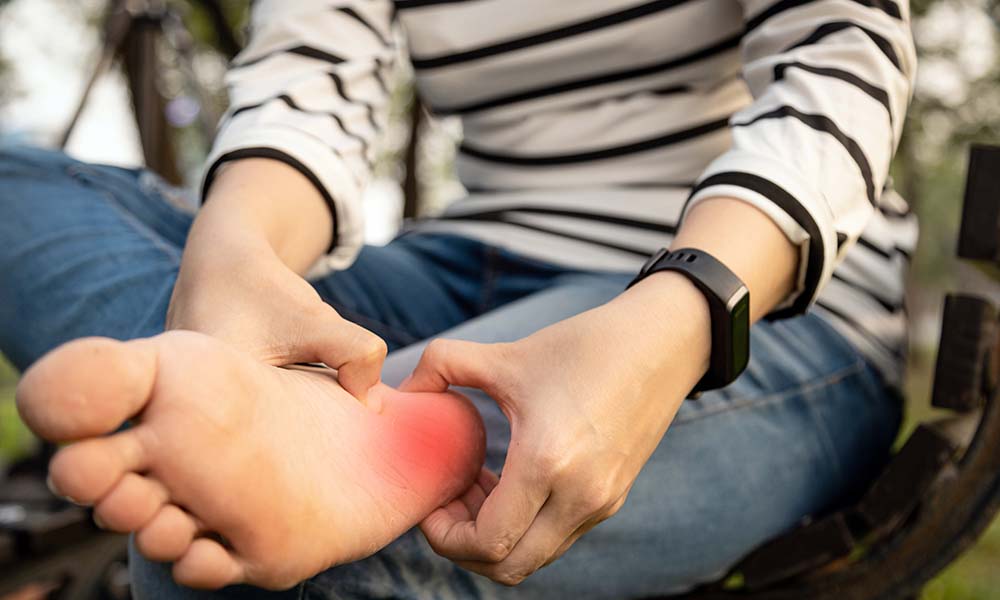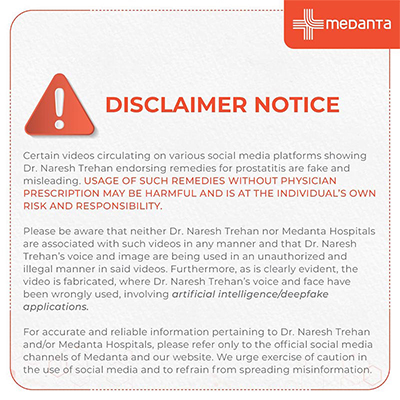Heel Pain: A Sign of Cancer

TABLE OF CONTENTS
Heel pain affects approximately 10% of the population at any given time, with plantar fasciitis being the most common cause. Whilst most cases of heel pain are benign and treatable without surgery, in rare instances, this common symptom can signal something more serious.
Although uncommon, heel pain can occasionally be linked to cancer. Studies show that whilst 30% of all cancer patients develop bone metastases, only 0.007-0.3% experience metastases in the hands or feet. These statistics highlight why doctors must carefully evaluate persistent heel pain, particularly when it doesn't respond to conventional treatments.
This comprehensive guide examines the relationship between heel pain and cancer, helping readers understand when to seek medical attention. It explores common causes of heel discomfort, potential warning signs, and the importance of proper diagnosis for persistent symptoms.
Heel Pain Causes and Symptoms
Pain in the heel stems from various underlying conditions, ranging from simple lifestyle factors to specific medical conditions. More than 2 million individuals receive treatment for plantar fasciitis each year, making it the predominant cause of heel discomfort.
The location of heel pain often indicates its specific cause. Pain underneath the heel frequently points to plantar fasciitis, which occurs when the strong, fibrous tissue connecting the heel to the toes becomes inflamed. This condition typically causes an achy sensation in the heel or along the foot's bottom, with pain being most severe during the first steps after rest.

Pain at the back of the heel might indicate different conditions:
Achilles tendinitis - inflammation of the body's longest tendon, commonly affecting runners and basketball players
Bursitis - swelling of fluid-filled sacs that cushion joints, often developing after prolonged periods of standing
Haglund's deformity - formation of a bony bump at the heel's back, worsened by high-heeled shoes
Several factors contribute to heel pain development:
Physical activities - running or jumping on hard surfaces
Footwear choices - wearing ill-fitting shoes
Body weight - obesity or rapid weight gain exceeding 15 pounds
Foot structure - having either high arches or flat feet
Walking style - abnormal gait patterns, such as rolling feet inwards
The nature of heel pain varies significantly. Some individuals experience sudden pain without apparent injury, whereas others develop symptoms gradually over time. Most patients describe morning pain that lessens with movement, though it might worsen after extended periods of activity.
Sever's disease presents a notable concern for active children between 8 and 14 years old. This condition specifically affects growing children who participate in activities requiring substantial running and jumping.
Certain systemic conditions, including diabetes, arthritis, and various inflammatory conditions, might also trigger heel pain. Furthermore, stress fractures can mimic symptoms typically associated with more common heel conditions, warranting careful medical evaluation.
How Heel Pain Could Be Linked to Cancer Symptoms
While most cases of heel pain are benign, medical research indicates that persistent heel discomfort might signal underlying cancer in rare instances. Bone metastasis commonly affects 30-40% of lung cancer patients, primarily targeting the axial skeleton.
The connection between heel pain and cancer manifests in two primary ways:
Primary Bone Cancer:
Osteosarcoma ranks as the most prevalent non-haemopoietic primary malignant bone tumour in children and adolescents
The symptoms often appear non-specific, with foot swelling and pain while walking being the most reported signs
Metastatic Cancer:
Cancer cells from other body organs can spread to the heel bone
Breast cancer and lung cancer have shown documented cases of metastasising to the calcaneus
Doctors note several warning signs that distinguish cancer-related heel pain from common foot conditions:
Response to Treatment:
Pain persists despite conservative treatments
Symptoms worsen over time rather than improving with rest
Traditional heel pain remedies prove ineffective
Additional Symptoms:
Unexplained weight loss
Changes in bowel movements
Persistent fatigue
Altered bladder habits
For patients with a history of cancer, any new onset of heel pain warrants careful evaluation. Studies show that acrometastasis (cancer spread to hands or feet), albeit rare, requires prompt medical attention, especially when symptoms persist.
Medical imaging plays a vital role in accurate diagnosis. Research suggests that conventional foot X-rays during initial diagnosis for patients with suspected chronic plantar heel pain help identify potential bone lesions early.
The medical community emphasises that while cancer-related heel pain remains uncommon, certain patient groups require heightened vigilance:
Those with previous cancer diagnoses
Individuals experiencing unexplained systemic symptoms
Patients whose heel pain shows no improvement with standard treatments
Early detection significantly influences treatment outcomes. Therefore, doctors recommend thoroughly evaluating persistent heel pain, particularly when accompanied by other systemic symptoms.
Preventing Heel Pain: Healthy Foot Care and Lifestyle Tips
Proper foot care and lifestyle modifications are vital in preventing heel discomfort. Simple yet effective strategies can significantly reduce the risk of developing painful heel conditions.
Footwear choices serve as the foundation for healthy feet. Selecting shoes that provide adequate arch support and proper fit helps distribute weight evenly across the foot. Athletic shoes require replacement every 400-500 miles for runners. Moreover, non-runners should consider replacing their shoes every six months.
For individuals spending extended periods standing, these preventive measures prove beneficial:
Wear supportive footwear with shock-absorbing heels
Use inserted heel pads or orthotic shoe inserts
Avoid walking barefoot on hard surfaces
Replace worn-out shoes promptly
Physical activity modifications additionally help safeguard against heel issues. Runners face an increased risk of developing heel problems. Following these guidelines minimises potential complications:
Cover fewer miles on softer surfaces
Warm up properly before exercise
Cool down after physical activities
Start exercise routines gradually
Incorporate low-impact activities like swimming
Maintaining a moderate body weight reduces stress on the heels.
Regular stretching exercises strengthen foot muscles and enhance flexibility. Focusing on calf muscles and the plantar fascia helps prevent tissue tightness. Night splints, which stretch feet during sleep, prove particularly beneficial for individuals with recurring heel issues.
For optimal prevention, incorporating these lifestyle adjustments proves beneficial:
Maintain proper posture during daily activities
Take regular breaks when standing for long periods
Keep foot and heel tendons flexible through stretching
Consider physical therapy for targeted exercises
Use compression sleeves to prevent unnecessary movement
Proper foot care requires consistent attention. Implementing these preventive measures alongside regular foot health monitoring can significantly reduce individuals' risk of developing heel pain conditions.
Conclusion
While heel pain affects many people, cancer-related cases remain extremely rare. Doctors emphasise that common conditions like plantar fasciitis account for most heel discomfort. However, persistent pain that doesn't respond to standard treatments deserves careful attention, especially when accompanied by unexplained weight loss or fatigue.
Prevention certainly plays a key role in managing heel health. Simple steps like wearing proper footwear, maintaining a healthy weight, and following correct exercise practises help reduce the risk of developing heel problems.
Medical evaluation becomes essential when heel pain persists despite conservative treatments or appears alongside other concerning symptoms. Understanding the difference between typical heel conditions and warning signs helps people make informed decisions about seeking medical care. Early detection and proper diagnosis remain crucial for successful treatment outcomes, whether dealing with common foot problems or more serious underlying conditions.
FAQs
When should someone see a doctor for heel pain?
Medical attention becomes necessary if heel pain persists beyond a few weeks with rest or pain relievers. A healthcare visit is also essential upon experiencing severe foot swelling, inflammation, stiffness, or difficulty walking.
What are the most common causes of heel pain?
Several conditions might trigger heel discomfort:
Plantar fasciitis - inflammation of tissue connecting heel to toes
Achilles tendinitis - affecting the large tendon at the heel's back
Heel spurs - bony growths under heel bones
Bursitis - swelling in fluid-filled sacs
Stone bruise - bruising under the heel
Arthritis - joint inflammation
Can exercise help with heel pain?
Indeed, specific exercises prove beneficial for heel pain management. Plantar-fascia-specific stretching shows long-term symptom improvement. Strengthening foot stabilising muscles helps relieve pressure on the plantar fascia, potentially speeding up recovery.
Does having flat feet mean inevitable heel pain?
This represents a common misconception. Flat feet alone do not sentence someone to lifelong heel pain. Many individuals with flat feet never experience heel problems. Similarly, many people with normal arches develop heel pain. Multiple factors typically contribute, including:
Unsupportive footwear
Extended standing periods
Tight Achilles tendon
What treatment options are available?
Several approaches help manage heel pain:
Rest and ice application
Proper footwear selection
Orthotic supports
Physical therapy
Anti-inflammatory medications
Corticosteroid injections in severe cases




